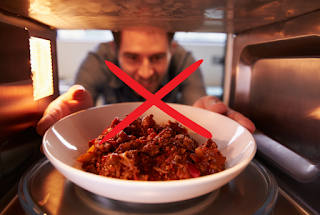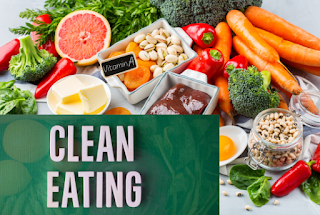Reheat with Caution: 7 Foods to Avoid Microwaving and Safe Alternatives
We all have leftover food in our fridge that needs reheating, but did you know that certain foods can be harmful if reheated in the microwave? In this article, we'll share with you the top 7 foods that you should never reheat in the microwave, and provide you with alternative methods to safely reheat them. Whether you're dealing with leftover rice or hard-boiled eggs, we've got you covered with these easy and effective tips.
The microwave is a convenient kitchen appliance that many people rely on for reheating their meals. However, some foods should never be reheated in the microwave due to safety concerns. Reheating certain foods can cause bacteria growth or the release of harmful compounds. Here are 7 of the best foods to avoid reheating in the microwave.Rice
Eggs
Chicken
Spinach
Potatoes
Mushrooms
Breast milk
In summary, reheating certain foods in the microwave can pose a risk to your health. To avoid potential dangers, it's best to reheat certain foods on a stovetop or oven or eat them cold. By being cautious with reheating, you can help protect
How to reheat these foods? 7 best alternative.
Here are some alternatives to reheating the 7 foods mentioned in this blog post.:
Rice: To reheat cooked rice, place it in a pot with a small amount of water or broth, cover it with a lid, and heat it on the stove until it's heated through. Alternatively, you can reheat rice in the oven by placing it in a covered baking dish with a little bit of liquid and heating it at 350°F until it's hot.
Eggs: If you have leftover eggs, it's best to eat them cold or reheat them on a stovetop. To reheat scrambled eggs, heat them in a non-stick pan on low heat until they're hot, stirring occasionally. For hard-boiled eggs, you can slice them and add them to a salad or use them as a topping for sandwiches.
Chicken: To reheat chicken, use a stovetop or oven and make sure the internal temperature reaches 165°F. You can also shred the chicken and use it in salads, sandwiches, or wraps.
Spinach: To reheat spinach, sauté it in a pan with a little bit of oil or butter until it's heated through. You can also add it to soups or stews and let it cook for a few minutes.
Potatoes: To reheat potatoes, use a stovetop or oven and make sure they reach an internal temperature of at least 165°F. You can also use leftover potatoes to make potato salad, mashed potatoes, or hash browns.
Mushrooms: To reheat mushrooms, sauté them in a pan with a little bit of oil or butter until they're heated through. You can also add them to soups, stews, or pasta dishes and let them cook for a few minutes.
Breast milk: To warm up breast milk, use a bottle warmer or place the bottle in warm water. You can also thaw breast milk in the refrigerator overnight or under warm running water.
By using these alternative methods to reheat the 7 foods mentioned in the article, you can ensure that your food is safe and free from harmful compounds.


Comments
Post a Comment